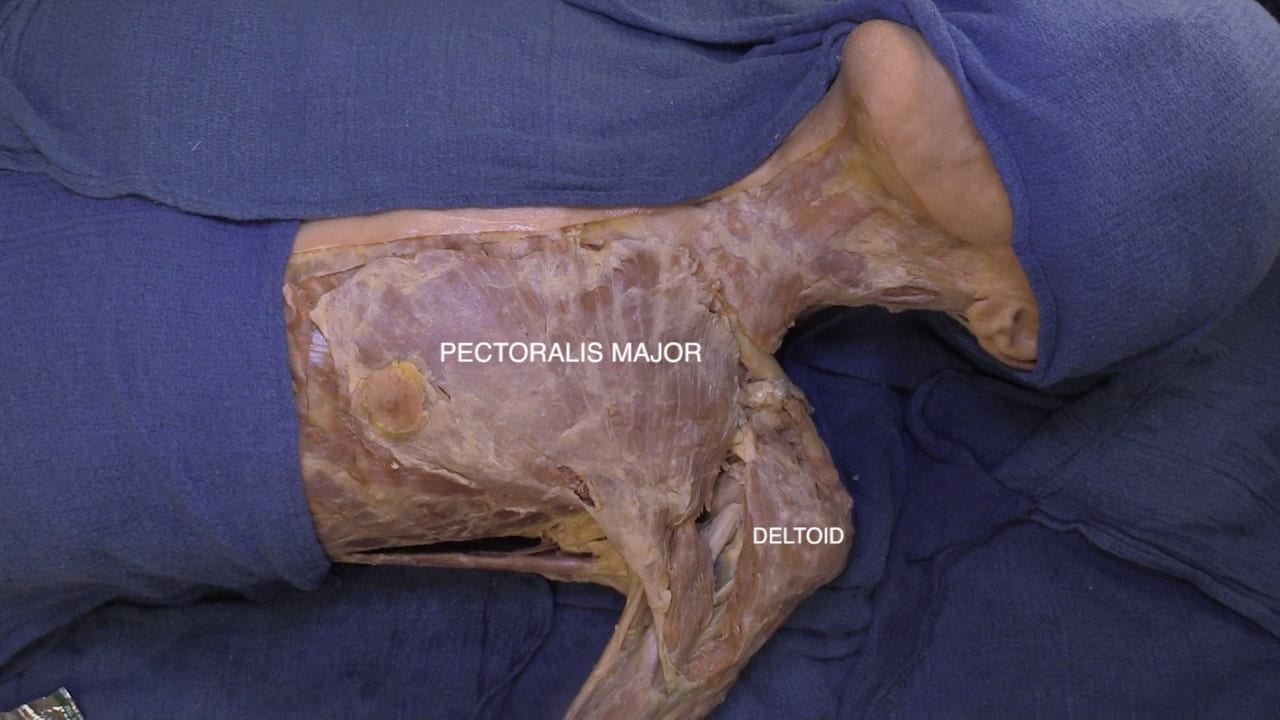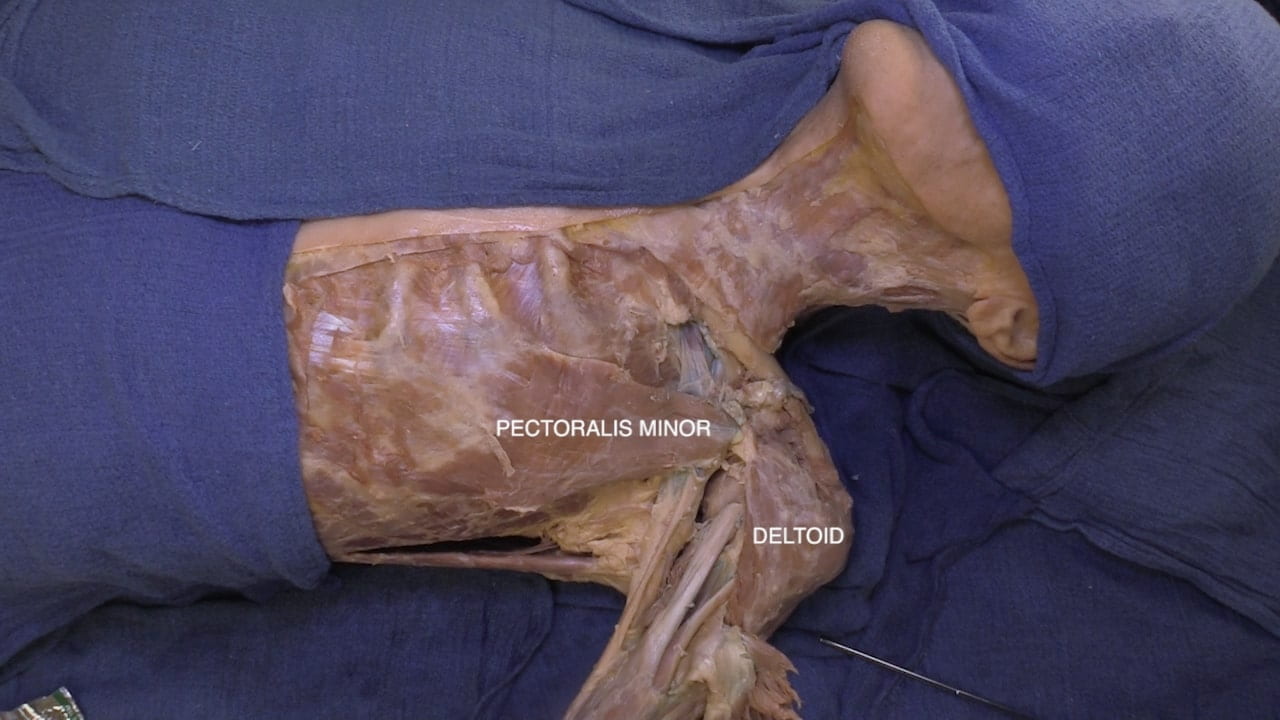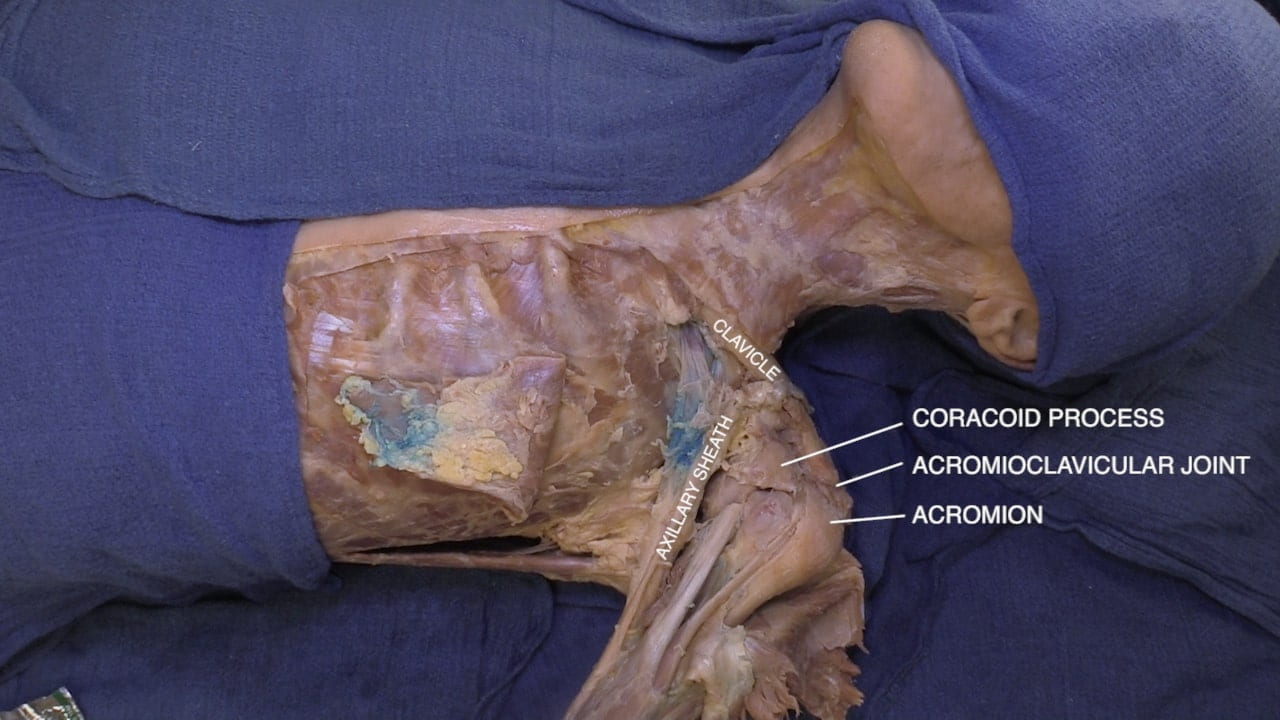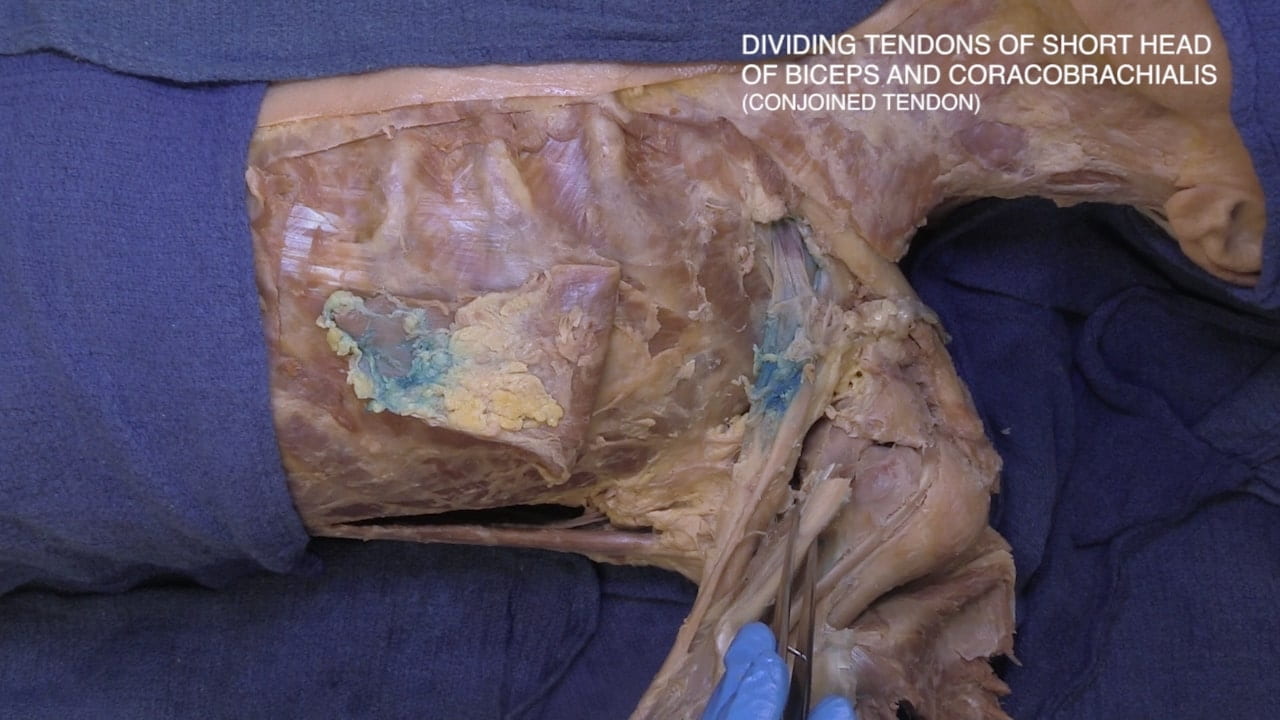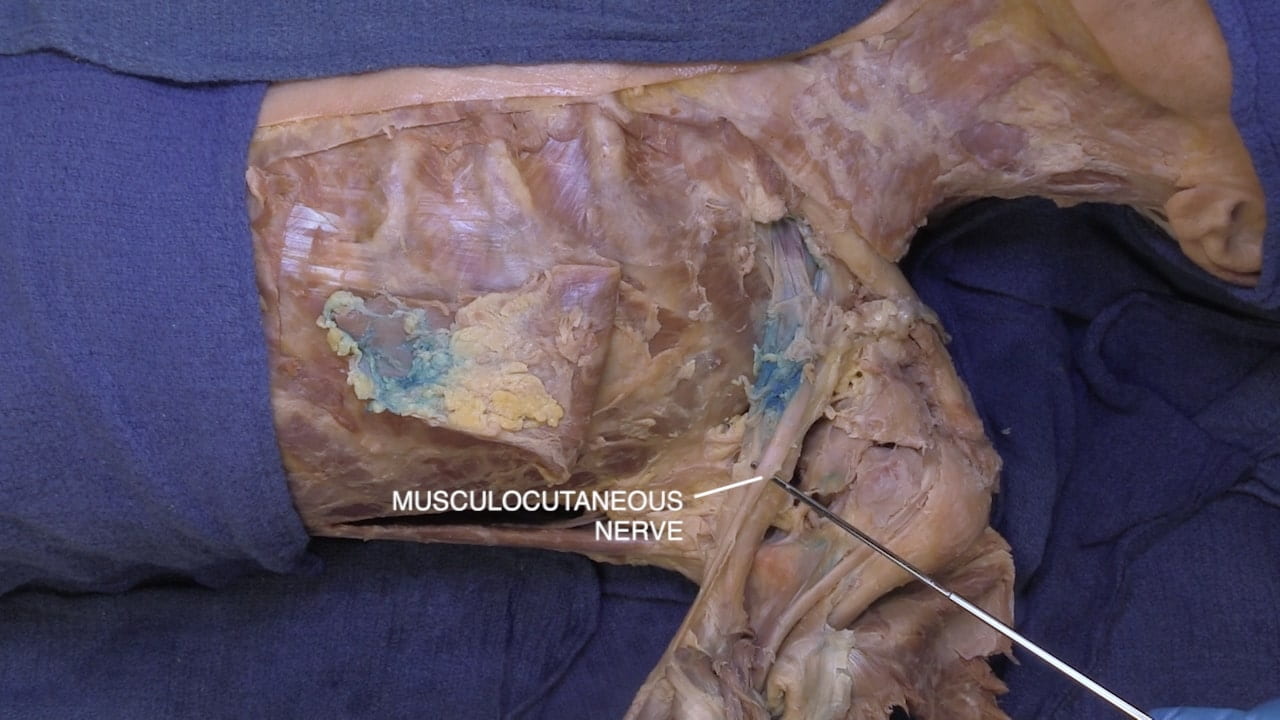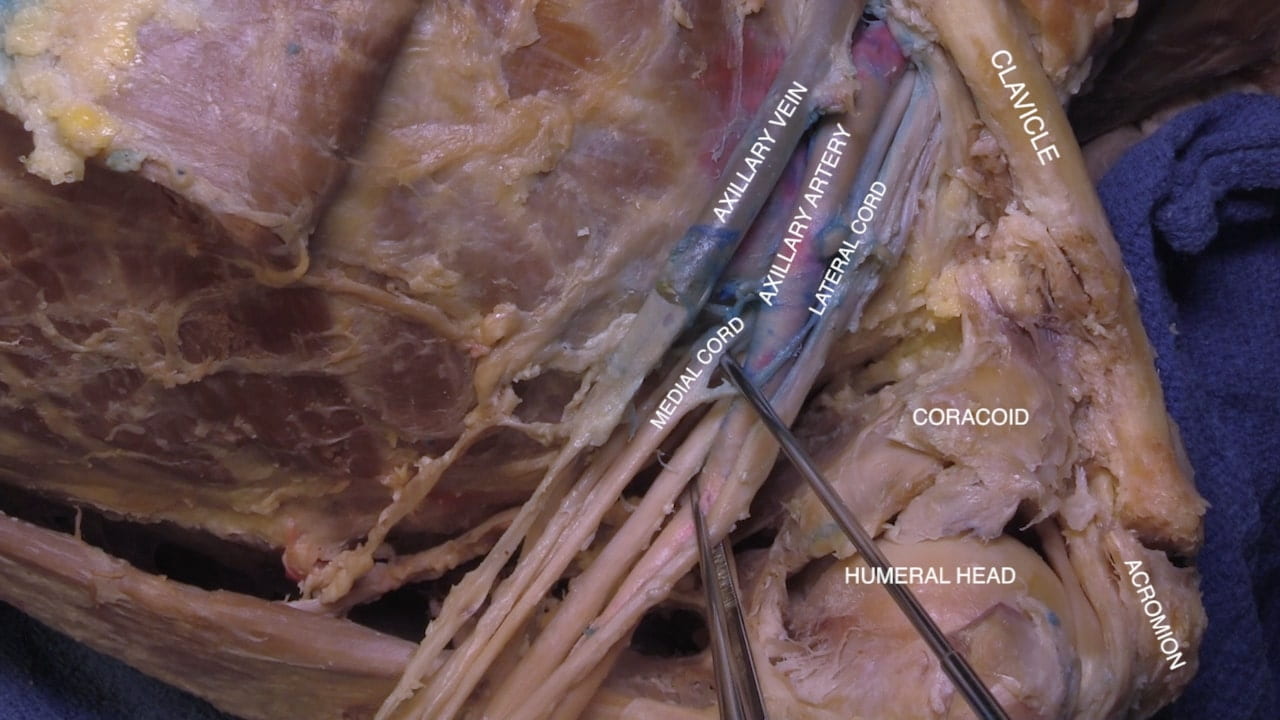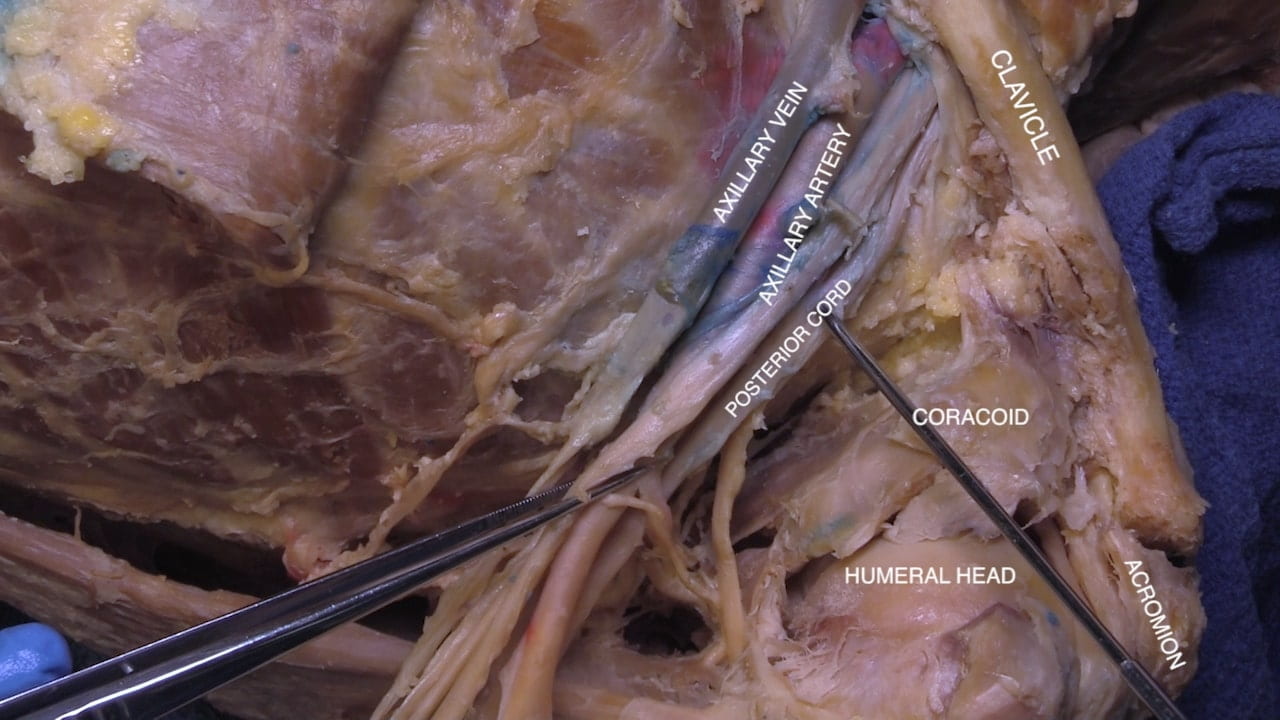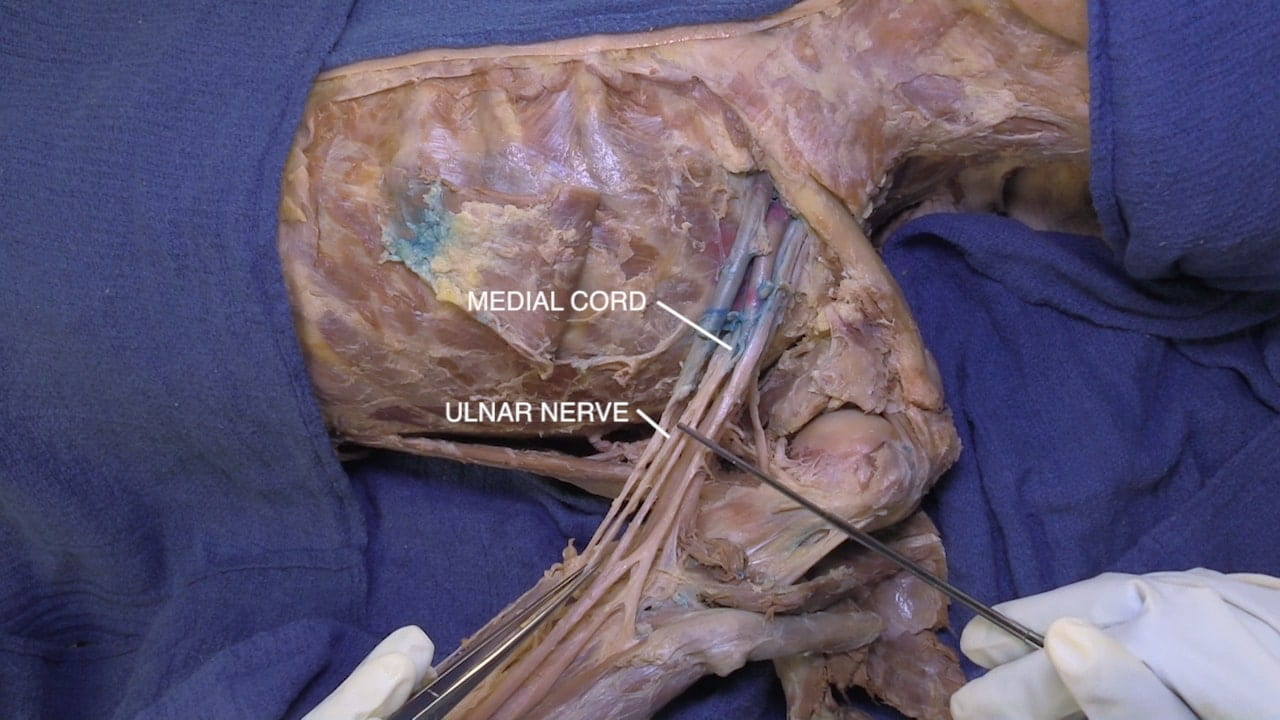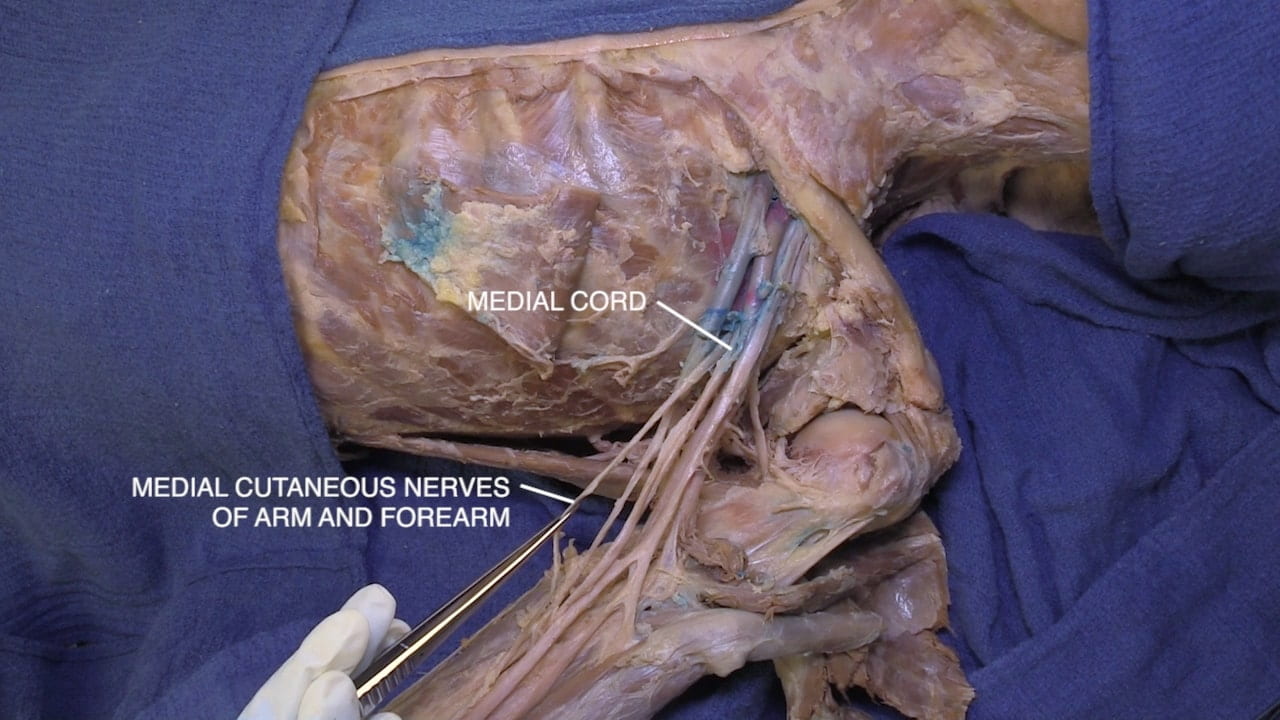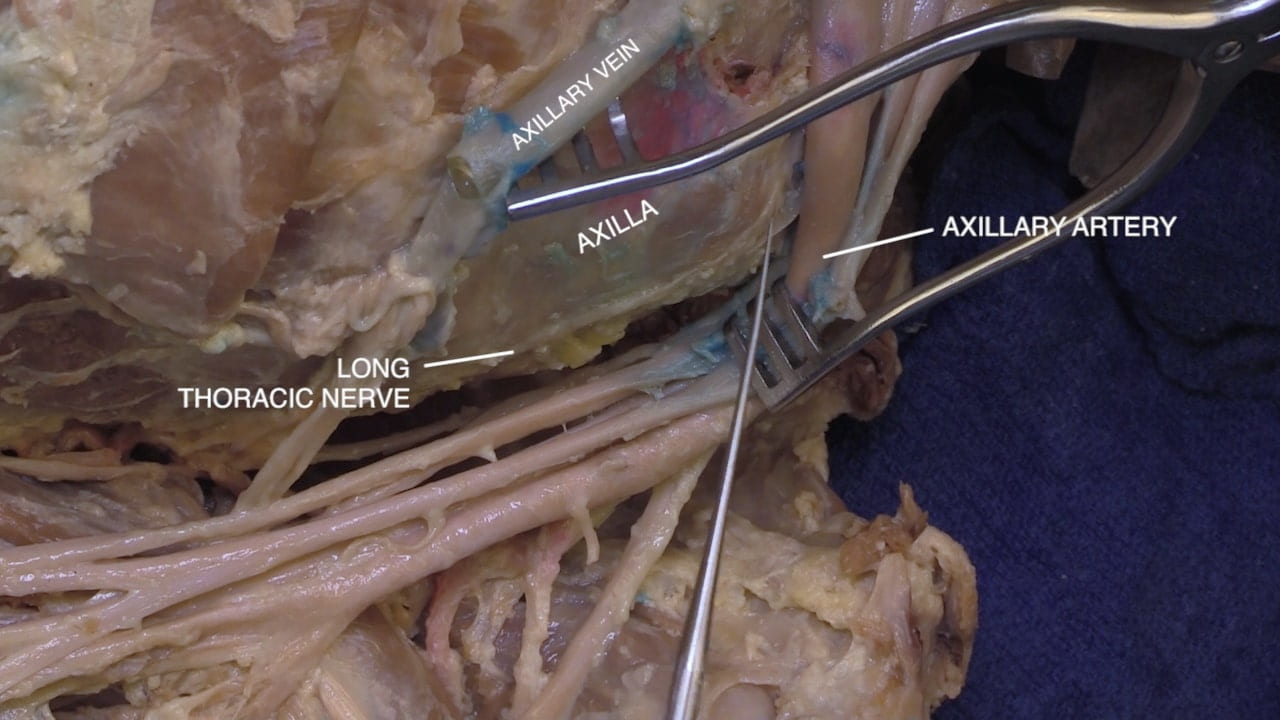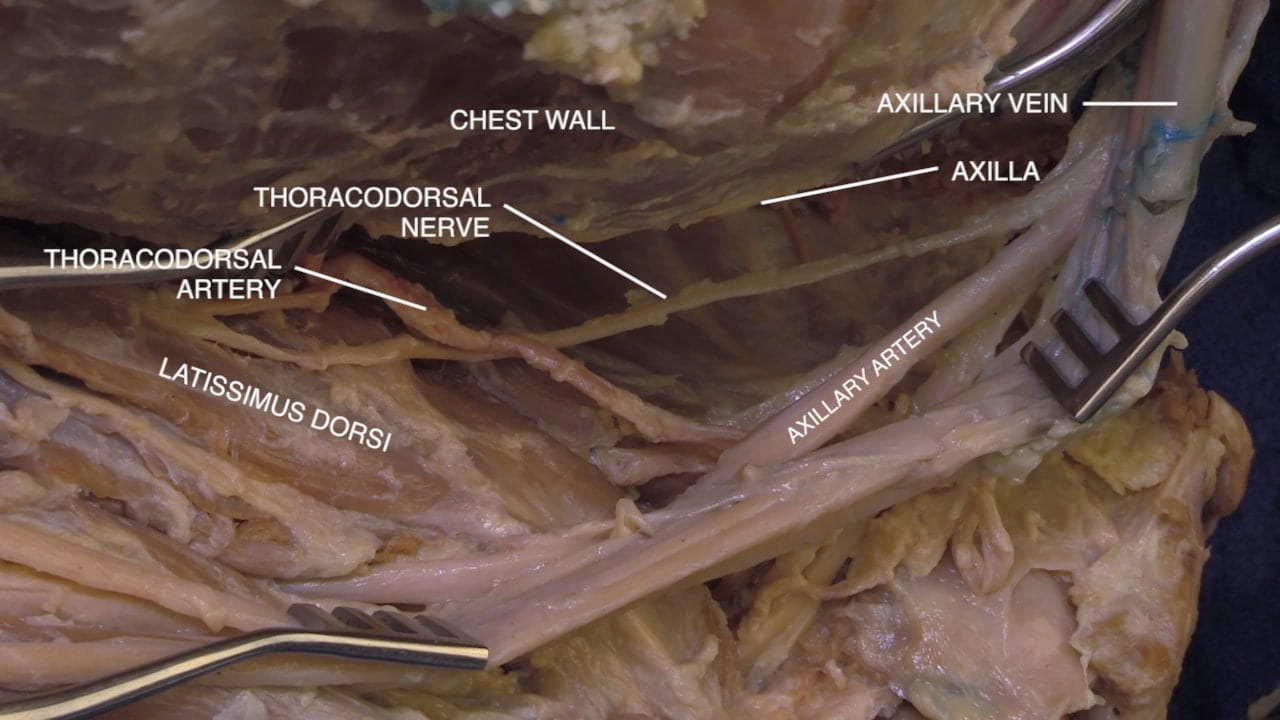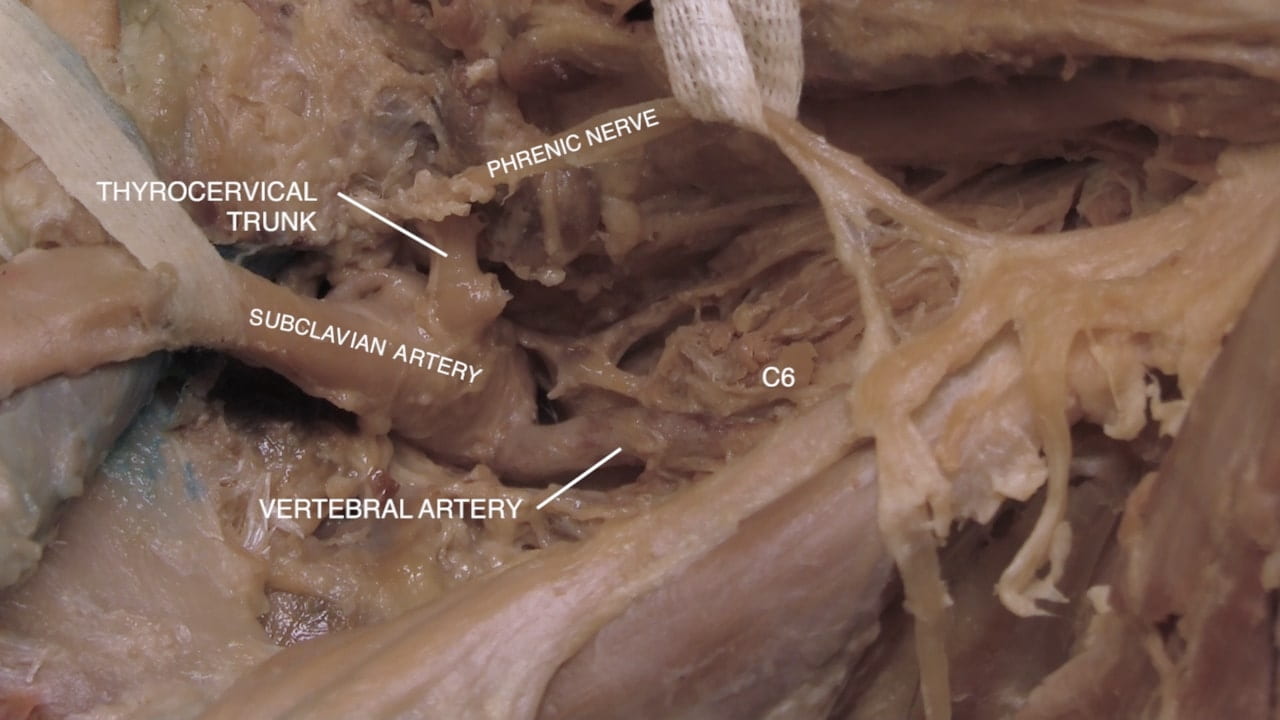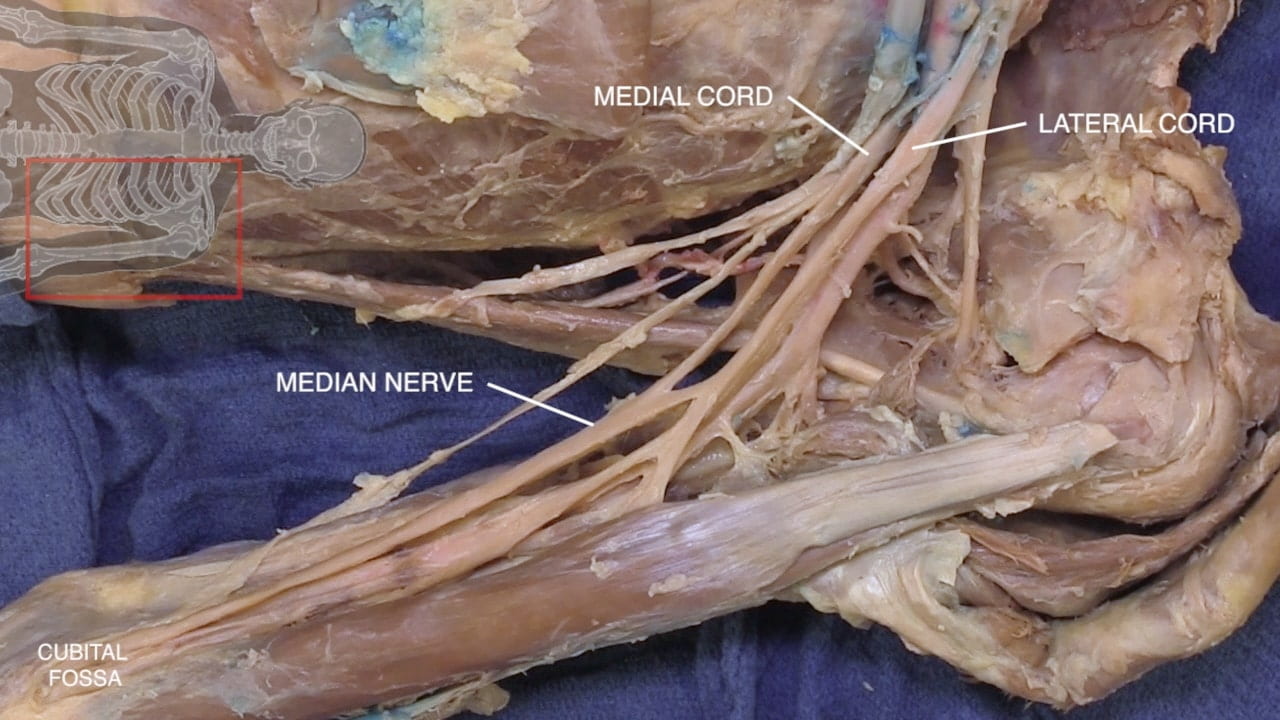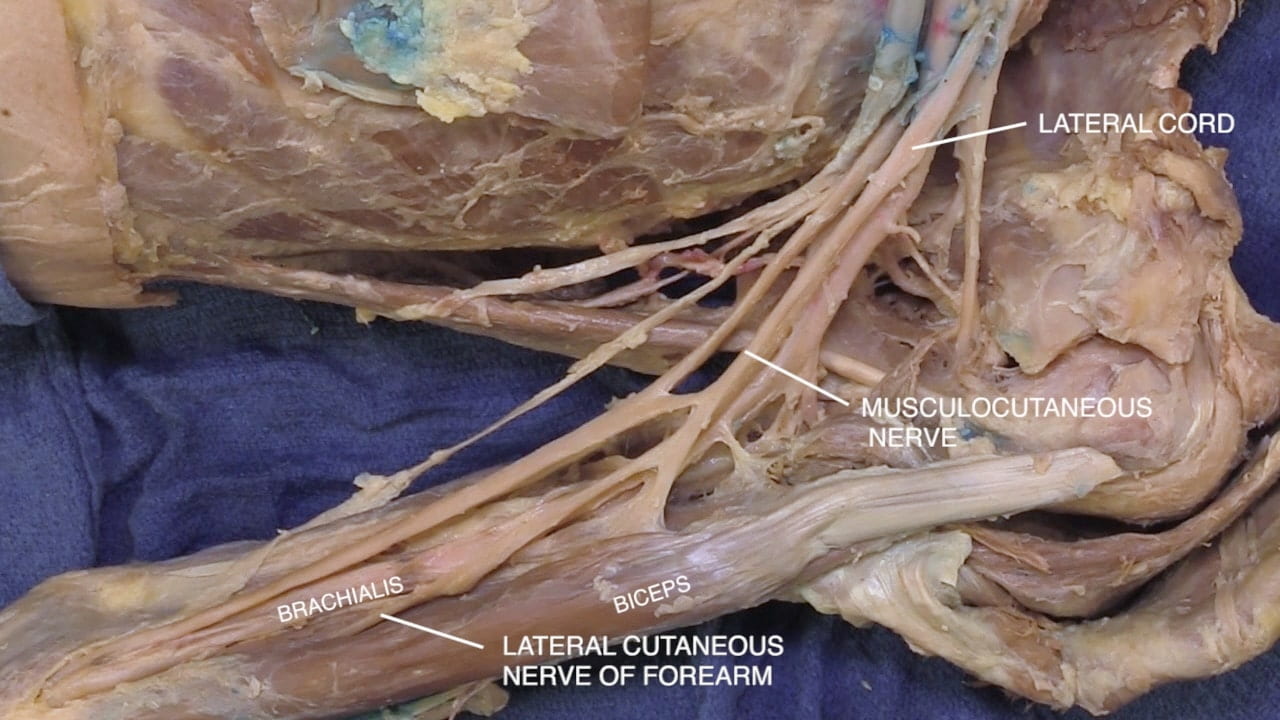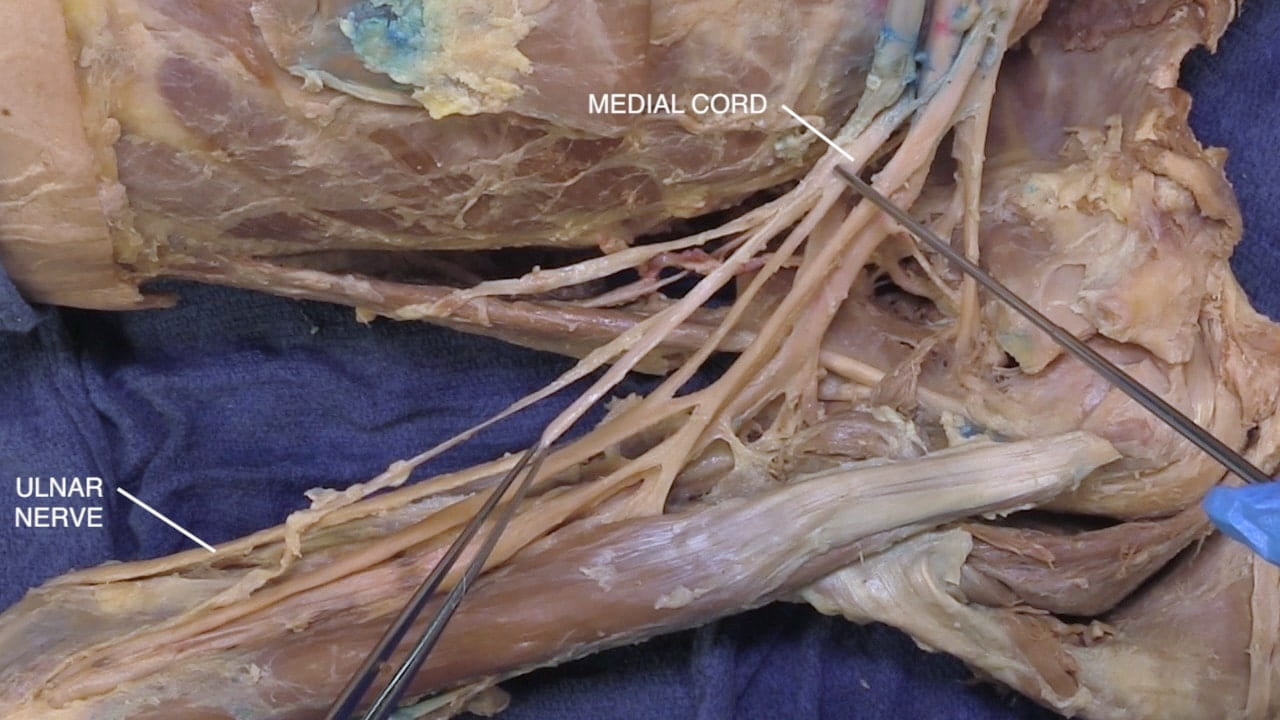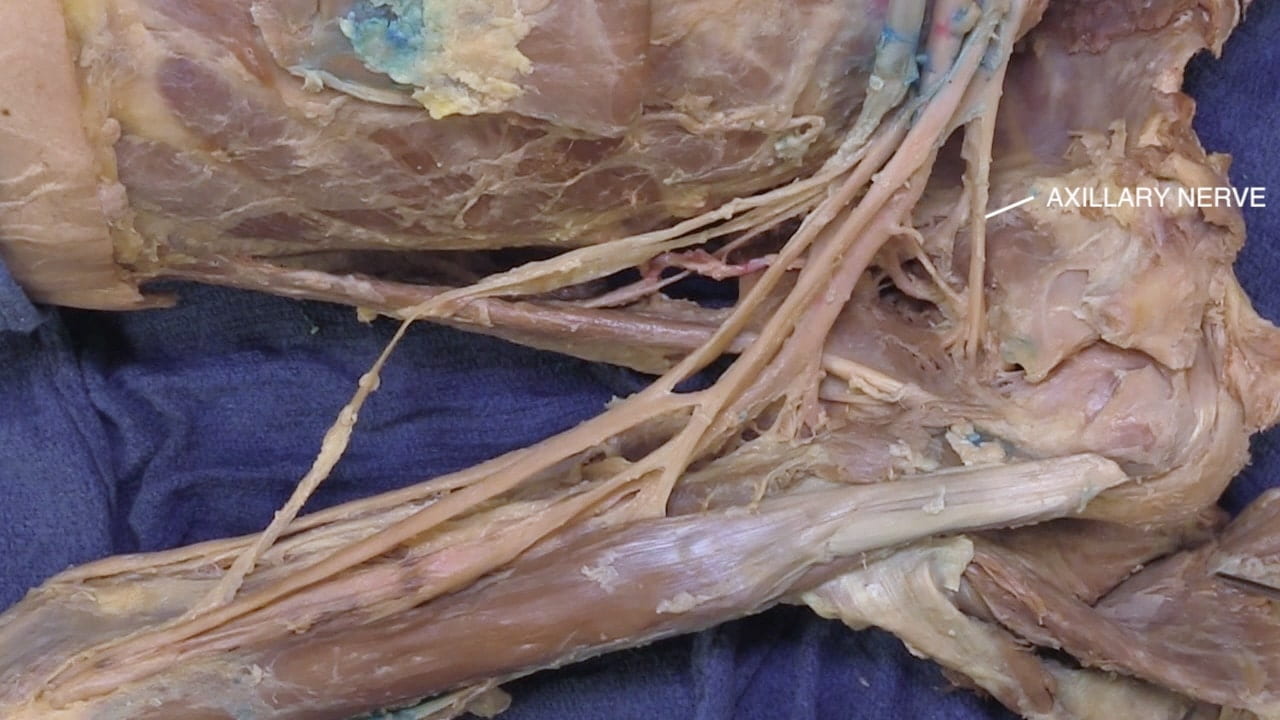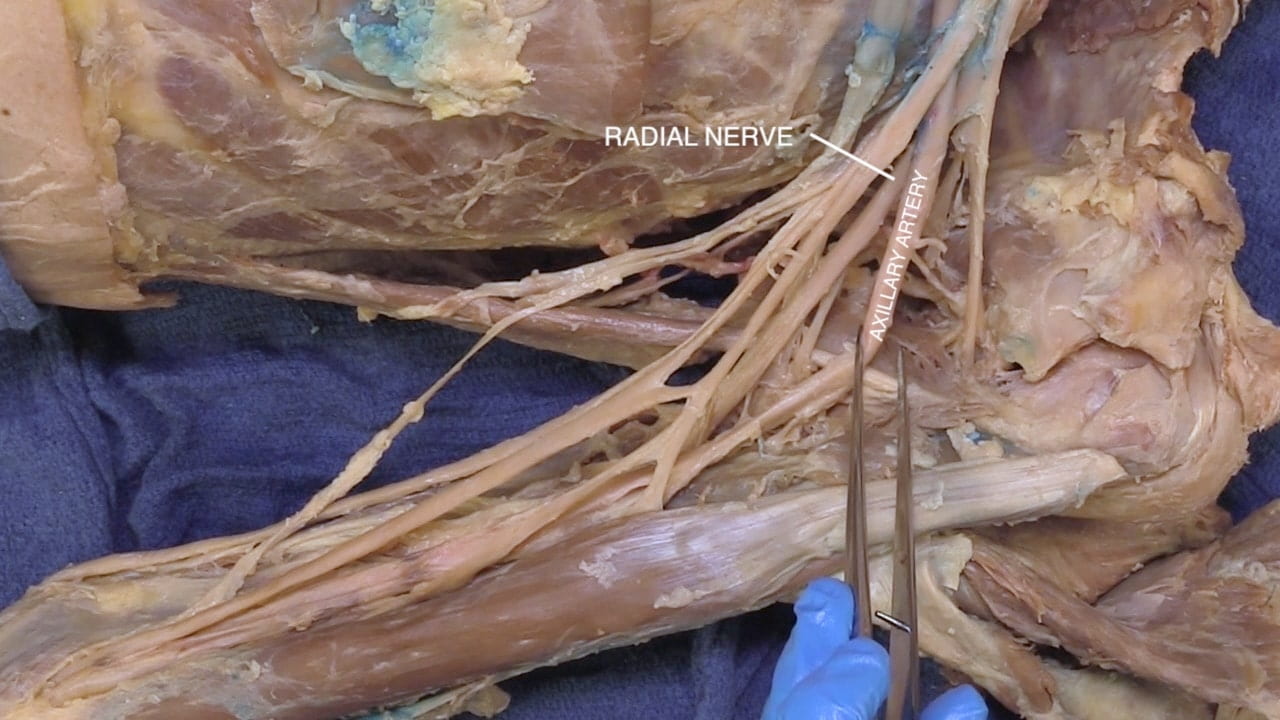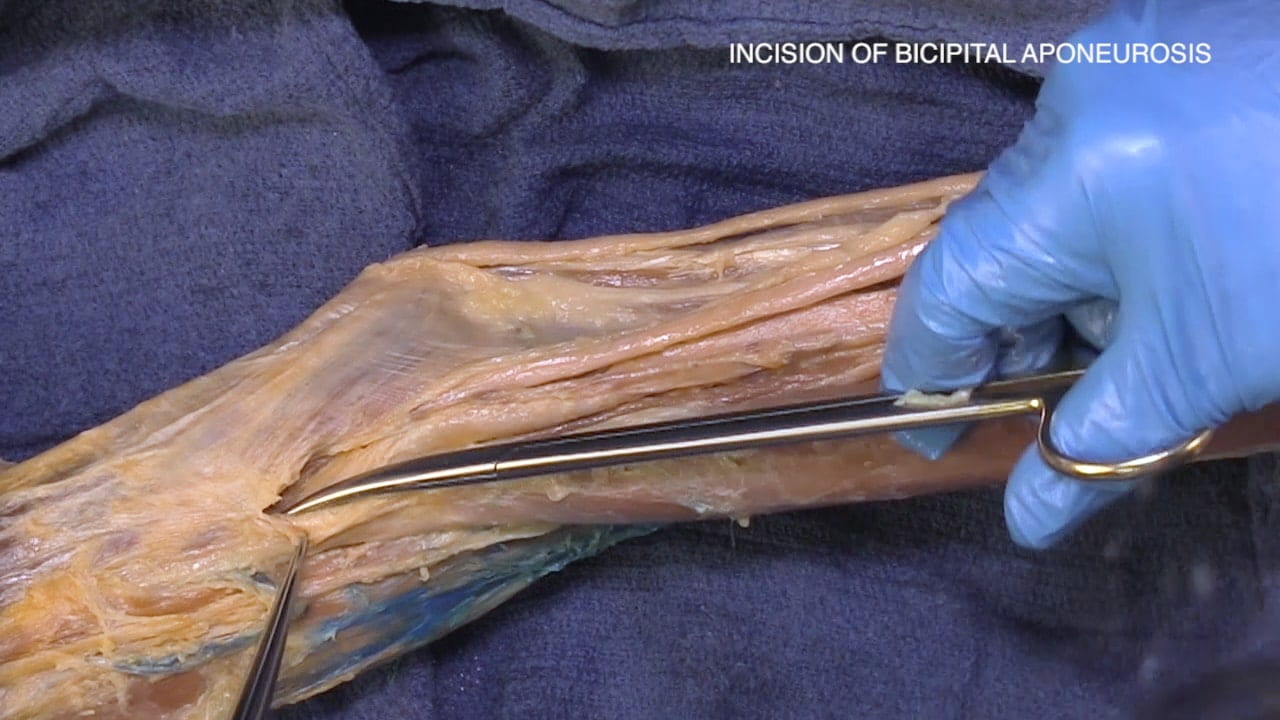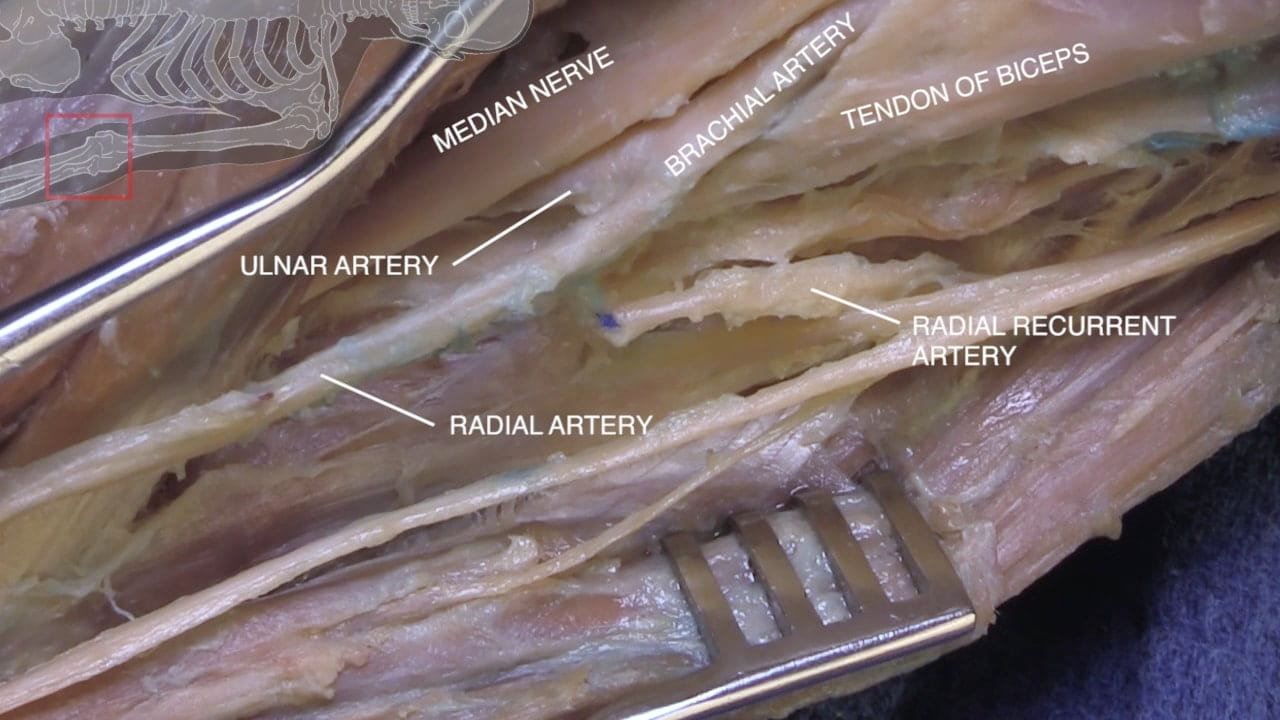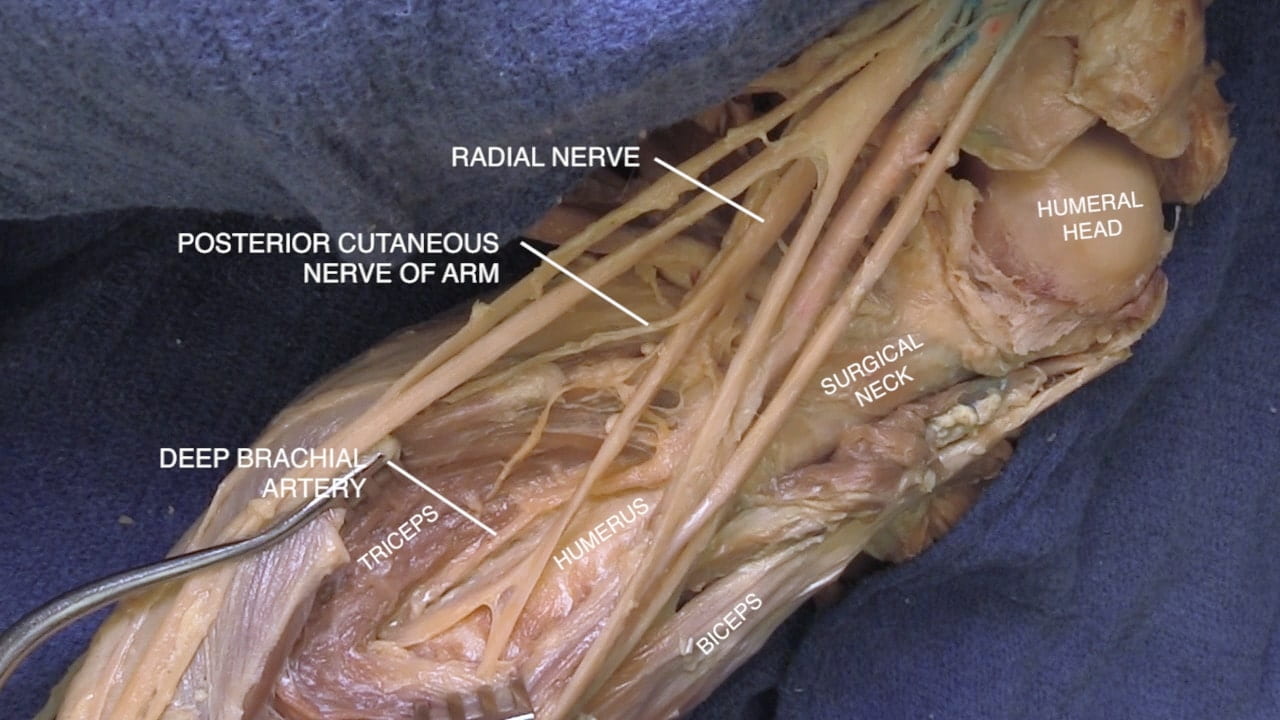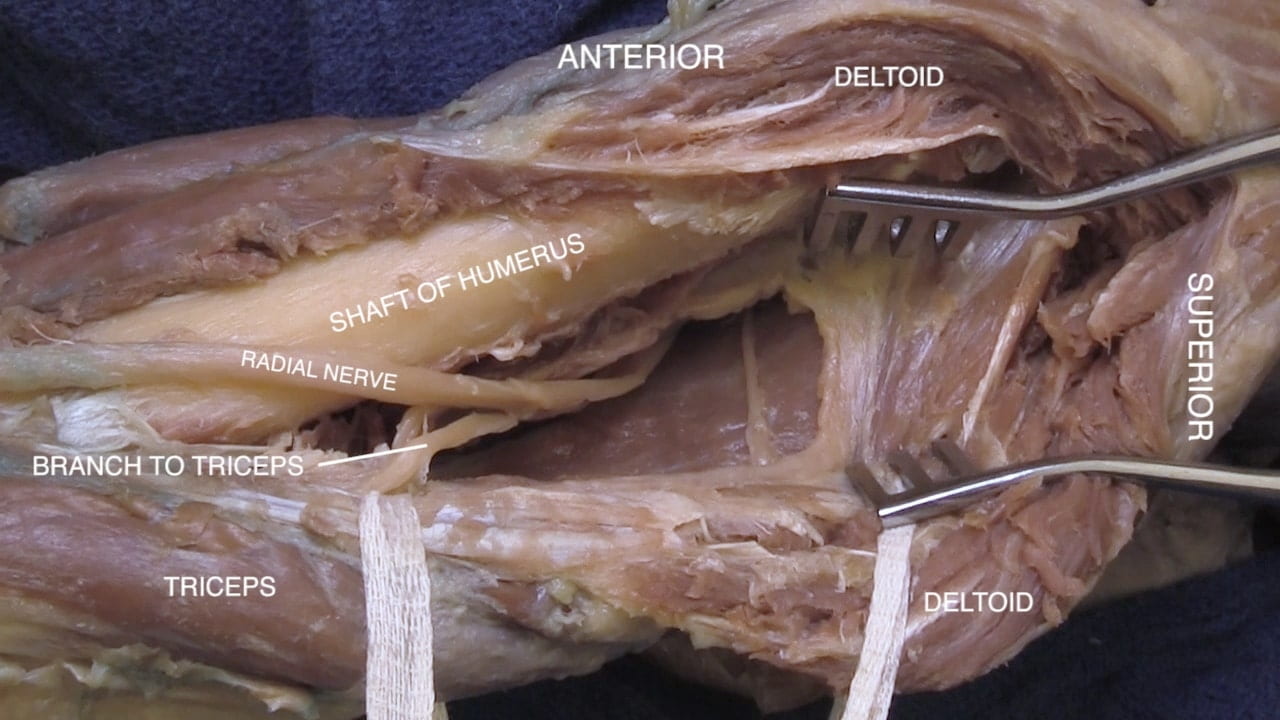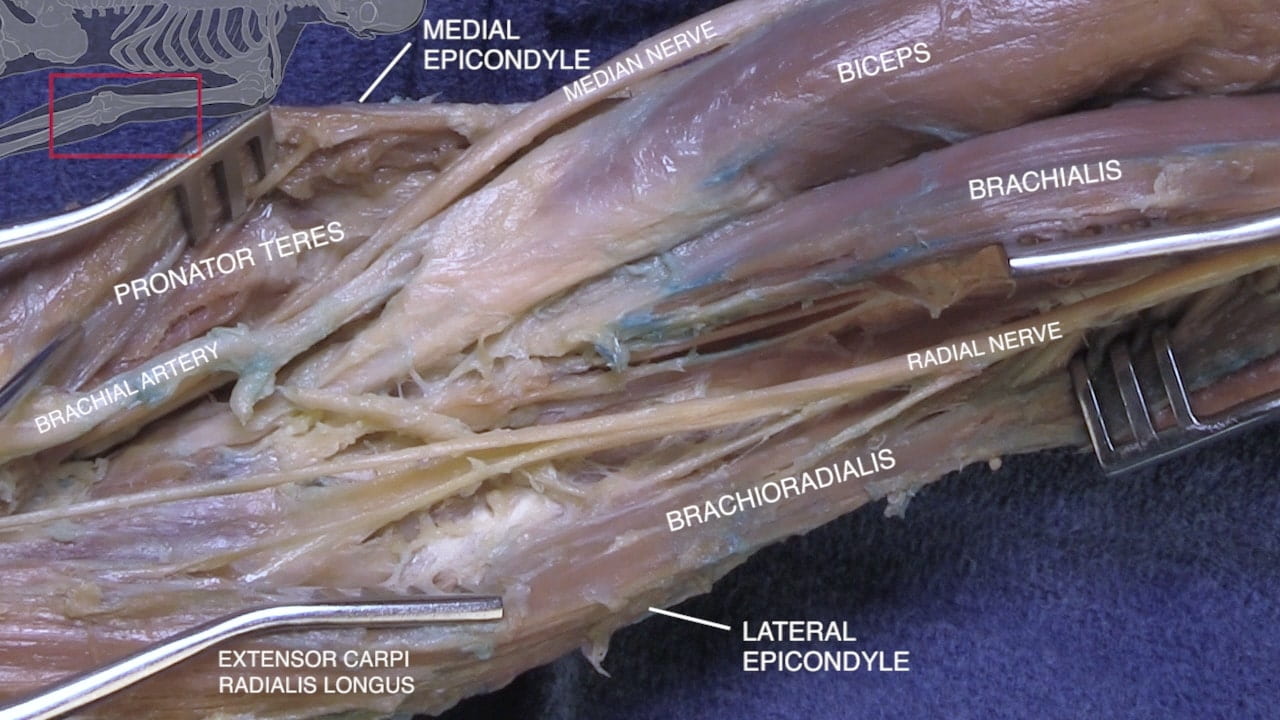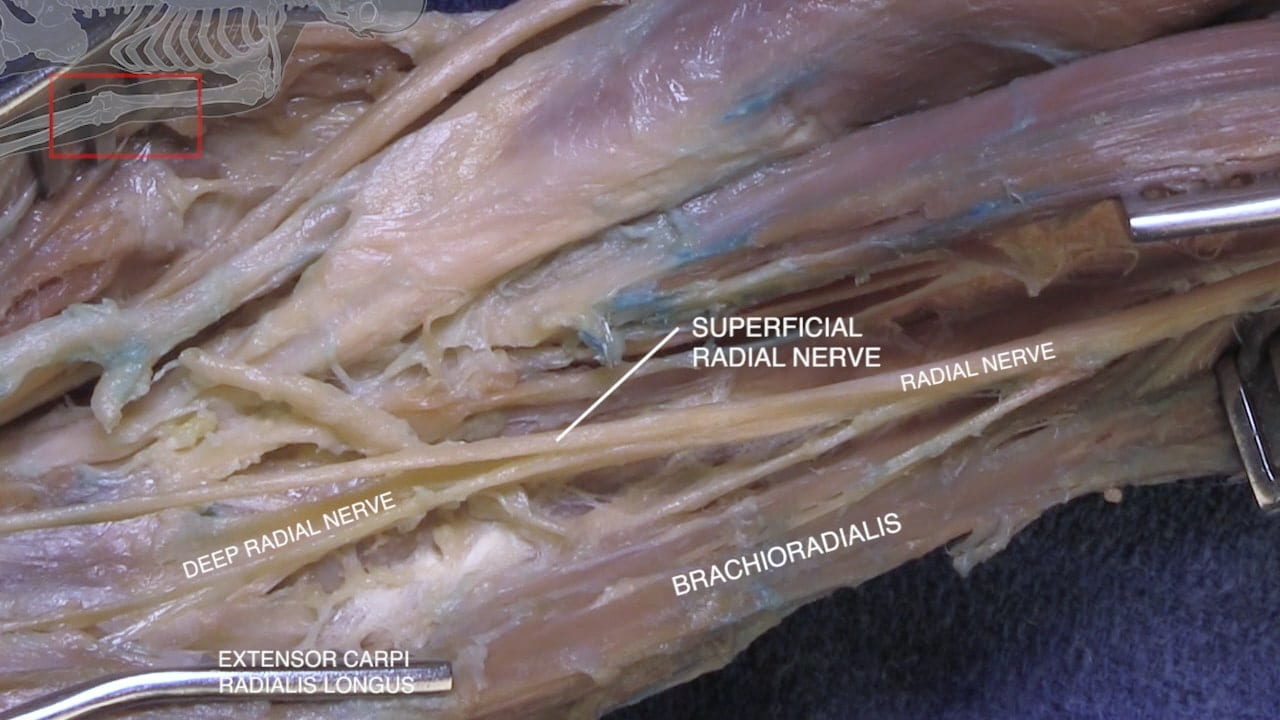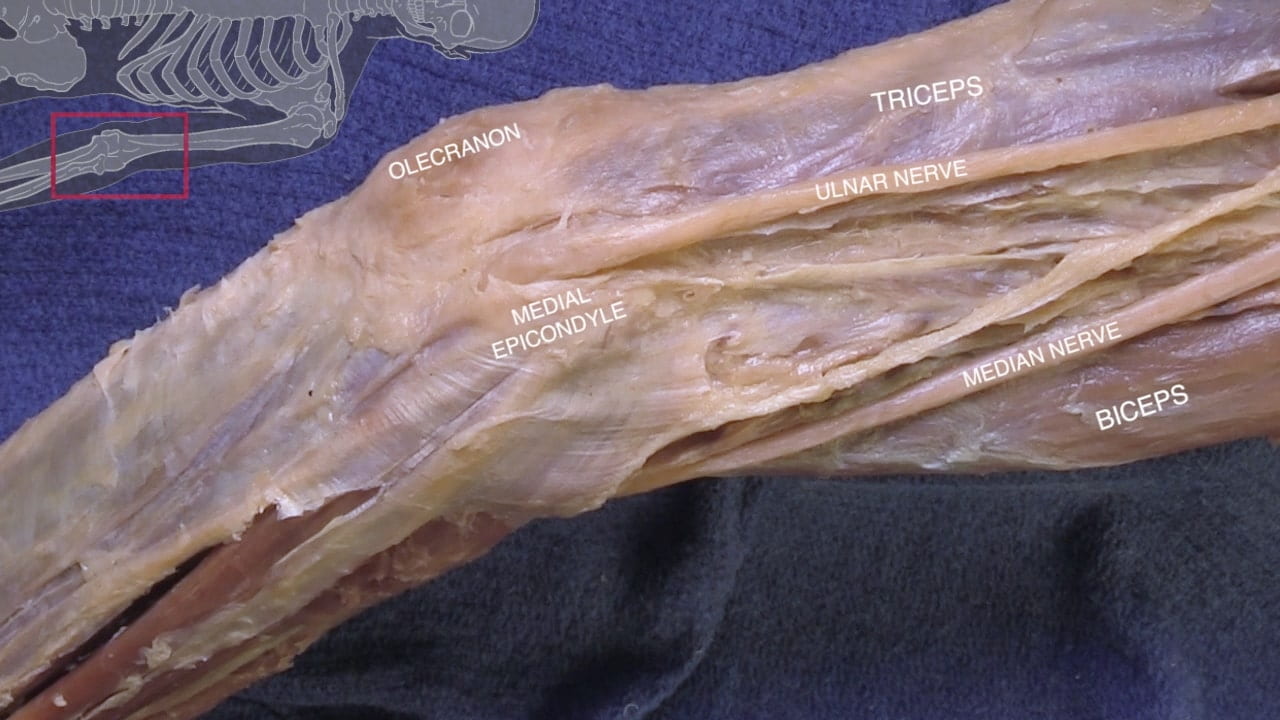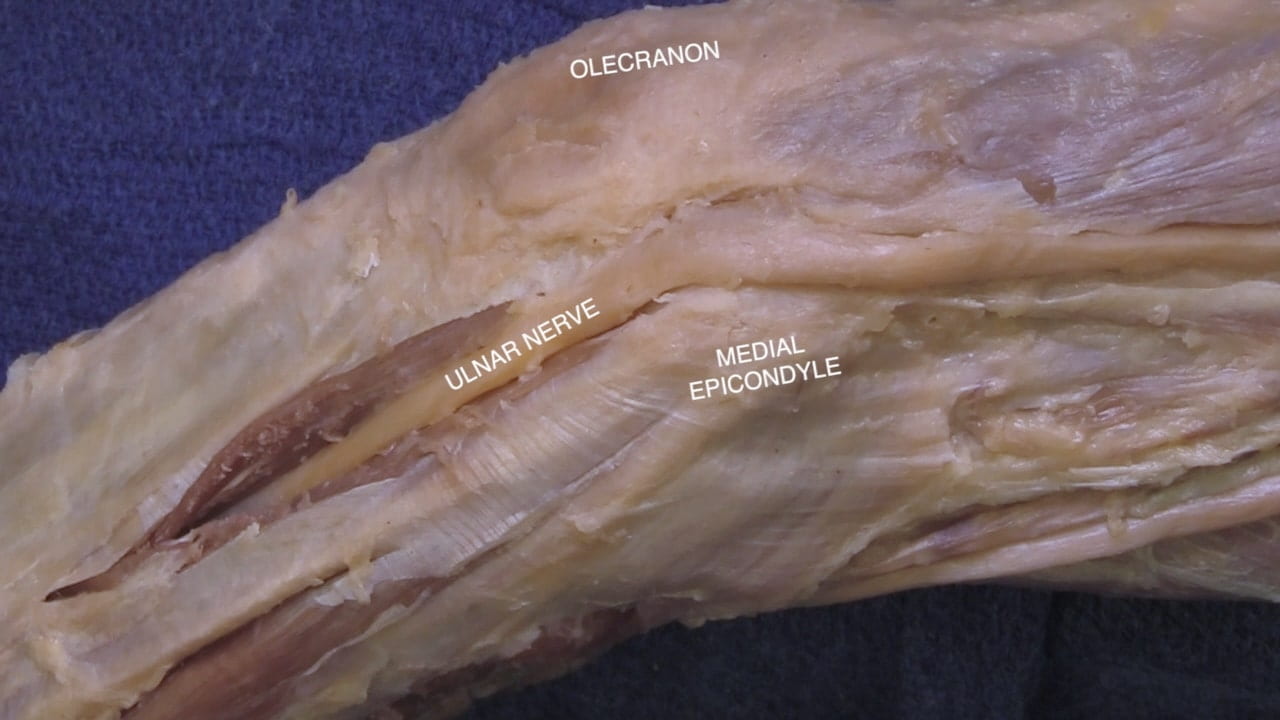Brachial Plexus
Lab Summary
The brachial plexus is taught in this lab from nerve roots to trunks, divisions, cords and branches. The relationships of these structures to scalene muscles, axillary artery and upper extremity musculature is presented. Nerves along chest wall, long thoracic and thoracodorsal nerves, vulnerable to axillary node dissection are emphasized for their surgical vulnerability. Peripheral nerves and vasculature are discussed as they course along the arm and elbow joint.
Lab Objectives
- Identify roots, trunks, divisions, cords and branches of the brachial plexus.
- Describe the relationship of the roots of brachial plexus to anterior and middle scalene muscles.
- Locate the phrenic nerve and describe its relationship to anterior scalene muscle.
- Relate the cords of brachial plexus to axillary artery.
- Identify the suprascapular, musculocutaneous, median, ulnar, radial and axillary nerves.
- Locate the subscapular, circumflex humeral and deep brachial branches of axillary artery.
- At the elbow, describe the relationship of tendon of biceps and brachial artery.
- At the elbow joint, describe the course of median, ulnar and radial nerves as they pass to forearm.
Lecture List
Brachial Plexus, Proximal Brachial Plexus, Distal Brachial Plexus
Brachial Plexus
Anterior Chest Musculature
Brachial Plexus and Axillary Vessels
Medial Cord
Long Thoracic and Thoracodorsal Nerves
Proximal Brachial Plexus
Phrenic Nerve
Distal Brachial Plexus
Brachial Plexus Branches
Brachial Artery Branches
Radial Nerve
Branches of Radial Nerve
Ulnar Nerve
At the medial elbow, identify the ulnar nerve as passes in the ulnar groove between the medial epicondyle of the humerus and the olecranon process of the ulna. Incise the aponeurosis (cubital tunnel) to follow the nerve into the forearm.

